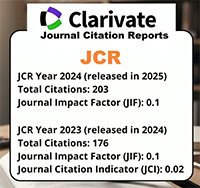Longterm melatonin administration alleviates paraquat mediated oxidative stress in Drosophila melanogaster.
Resumen
We investigated the effect of melatonin (MEL) in the activities of cytosolic superoxide dismutase (SOD) and catalase as well as in the levels of H2O2 and mitochondrial malondialdehyde (MDA) in paraquat-intoxicated Drosophila melanogaster. Paraquat (40 mM) was administrated for 36 h. Three groups of flies intoxicated with paraquat were used: PQ (exposed during 36h to paraquat), PQ-MEL (exposed during 36h to paraquat and then treated with MEL [0.43 mM] for 12 days) and PQ-Control (maintained in standard corn meal for 12 days). Two additional groups without pre-intoxication with PQ were added: Control (maintained in standard corn meal) and MEL (treated with MEL for 12 days). Immediately after PQ intoxication the concentration of MDA (17.240 Â} 0.554 nmoles MDA/mg protein) and H2O2 (3.313 Â} 0.086 nmol hydrogen peroxide/mg protein) and the activities of SOD and catalase (419.667 Â} 0.731 and 0.216 Â} 0.009 Units/mg of protein, respectively) in the PQ group were significantly increased with respect to Control. After 12 days of intoxication with PQ, the PQ-Control flies showed increases in H2O2 (4.336 Â} 0.108) and MDA levels (8.620 Â} 0.156), and in the activities of SOD and catalase (692.570 Â} 0.433 and 0.327 Â} 0.003, respectively) as compared to PQ-MEL (p<0.001). Treatment with MEL extended the life span of the groups PQ-MEL and MEL when compared to their corresponding controls. Motor activity decreased significantly in PQ-Control and PQ-MEL flies, suggesting that the damage caused by PQ affected the nervous system of flies. Our findings showed that oxidative damage caused by paraquat was observed even after 12 days and that melatonin mitigates this damage.





















